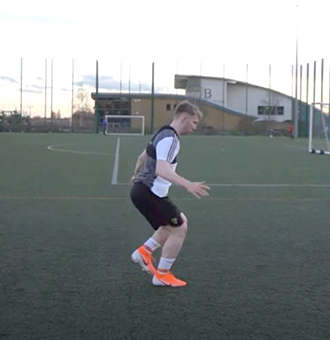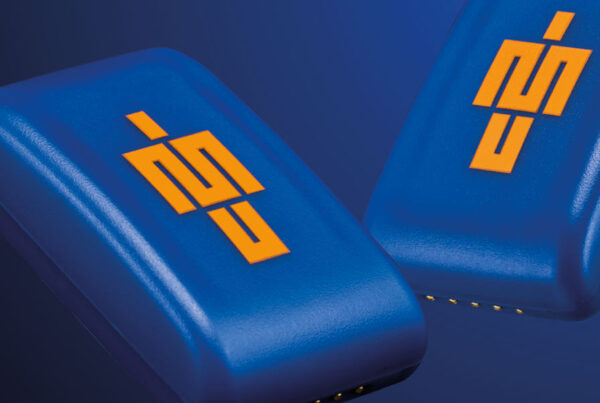Anterior cruciate ligament (ACL) injuries are some of the most feared injuries from players and clinicians. Time loss, rehabilitation challenges, and the risk of re-injury make it an injury to avoid at all costs. We only have to look at the literature to see the devastation that an ACL injury can have on an athlete’s career. Ardern et al. (2014) in their systematic review and meta-analysis highlighted that on average, one in three patients did not return to their pre-injury function, and only 55% returned to competitive sport.
The incidence of female ACL injuries is 3.5 times greater than males in basketball and 2.8 times greater in soccer [2]. These worrying statistics do not go unnoticed in college athletics. But despite lots of work going into preventing these injuries, they do still occur. Research from Markus Waldén et al [1] and colleagues in 2016 found that the ACL injury rate in male professional football players did not decline during the 2000s after a 15-year prospective study.
In this article we are going to revisit some of the case studies we have published with world-class practitioners over the last two years, examining the key themes and best practices for ACL rehab and prevention.
“The incidence of female ACL injuries is 3.5 times greater than males in basketball and 2.8 times greater in soccer” [2]

Benchmarking before injury
In mid-October 2020, a member of the Virginia Tech Hokies women’s soccer team sustained an ACL injury. Fortunately for her, Professor Jay Williams, Athletic Trainer Emily Whitaker, and Associate Director of Strength and Conditioning Brandon Dillard recognized the importance of benchmarking and had healthy data they could reference throughout her rehabilitation. Benchmarking is the process of collecting data on a healthy subject that can be referenced should they get injured.
When speaking to clinicians who have guided ACL rehabilitation, this crucial work done in the months and weeks before an injury even occurs is what makes the process easier.
Standardized tests are needed to collect benchmark data. In individual sports, there is often more freedom and fewer logistical issues with conducting benchmarking. However, in team sports, the type of tests used and the time taken to navigate a full squad through those tests is something that requires a lot of thought and planning.
In team sports, the warm-up is often the most standardized part of the program. It’s often similar in length, has a largely similar goal each day with some additional elements which prepare the athletes specifically for the type of training to come. This means that the warm-up is often the ideal place to collect benchmark data.
Standardised testing options
In March, we spoke to Professor Jay Williams at Virginia Tech who has introduced a standardized run at the start of each day as part of the players’ warm-up. This standardized run with the IMU Step sensors has enabled the team to ask better questions. Their process includes –
- A general warm up
- Elements of a sport-specific warm up
- A 200m jog at a self-selected pace up and down the field
“Collecting the preliminary data is to have an idea what a player’s ‘normal’ is,” Jay explained. “Following injury these data can then be used in the return to play process. For example, we had a player a few years ago who had a natural asymmetry of about 5%. She injured her ankle so was naturally limited with the activity she was able to do. However, when she was able to run, we saw that the asymmetry had reduced to almost symmetrical. We knew then that there was a negative change. Had we not had the preliminary data we would have looked post-injury and thought her gait was symmetrical and would have been pretty pleased. As we progressed through the rehab knowing that changes had occurred, that natural asymmetry re-emerged.”
Professor Jay and the team at Virginia Tech dove into their standardized run protocol. However, there are alternative outlooks when it comes to benchmarking. Practitioners may opt for more controlled tests that focus on specific physical qualities. These may also be linked to outcome measures during the return to play process developed in conjunction with a medical department.
Testing in a team sport environment
Choosing this produces more granular data, though it can lead to increased logistical issues, especially in a team sport environment. Despite that, Dr. John Harry and Graduate Assistant, Jacob Hurwitz at Texas Tech have developed a battery of tests that takes 30-40 minutes to get through with a squad. For their men’s basketball team, they have included a mixture of both unilateral and bilateral movements to allow deeper analysis into asymmetries. They chose 6 tests focusing on jumping, landing, and running which included –
- Leap matrix – a unilateral jump test
- 5-10-5 – a change of direction test
- Three hurdle hop – a bilateral jump test
- Run-step-run-step-shuffle – a lateral shuffle to sprint test
- Light reactive test – reactive agility test
- Curved running – curved running test to identify right left deficits

“A good ACL rehab program, carried out by a good coach, I believe means that asymmetries are going to reduce over time, especially if the training load remains relatively controlled” – Andrew Gray
Monitoring asymmetries
As we fast forward to the return to play process, asymmetries become a key marker of progression. A common practice among elite clinicians is the use of a Biodex machine. The Biodex measures muscle strength by applying constant resistance against muscles in repetitive motions. The importance of this part of the process was highlighted when we spoke to Connor Norman at the University of Georgia. Connor had an athlete that had recently sustained an ACL injury.
“When I test somebody in the athletic training room when returning to play from an ACL injury, we first get them on the Biodex to investigate the hamstring to quadricep strength ratio and we compare left to right.”
More functional tests are introduced to monitor asymmetries and track progress as rehabilitation progresses. The healthy limb is often used as a comparator in these functional tests, though ACL injury has been shown to affect strength in the non-injured leg as well [4]. It’s important to keep this in mind as we benchmark progress.
“As we progress through the rehab,” Connor said. “We go into more functional tests which include jump testing. Within that, we test a single leg hop and a triple hop for distance. These give us a marker of limb symmetry in the athletic training room. But in football, or any other sport, we need to be looking at activities and movements they are actually going to perform on the field and then look at the symmetry.”
As Connor mentioned, as we move through the rehabilitation process, we need to be measuring activities that the patient will be expected to perform; steadily moving away from controlled environments and towards those which are more game-like. To collect vital asymmetry data in the field, wearable technology should be used.
Managing rehabilitation intensity
In May 2019 we spoke to Andrew Gray as he managed a high-profile ACL rehabilitation. Andrew wanted to monitor and manage rehab intensity with Cronulla Sharks captain, Wade Graham.
“A good ACL rehab program, carried out by a good coach, I believe means that asymmetries are going to reduce over time, especially if the training load remains relatively controlled”, said Andrew. “You may see asymmetry reduced but as you continue to add complexity and fatigue to sessions and drills, increase the running speeds or changes of direction for example, that asymmetry typically returns. This is something we have been aware of for some time but IMU Step has allowed us to track the extent of those fluctuations so we can progress our drills at the right rate. We were able to communicate this asymmetry improvement with Wade which gave him reassurance that we were making progress.”
In the first 2 years after ACL reconstruction, 30% of people who returned to level I sports sustained a reinjury. Compared with 8% of those who participated in lower level sports. While we may not ever be able to predict and prevent initial ACL injuries, reinjury is an area that we have much more control over. We believe that with proper management and tracking, the ACL reinjury rate should be close to zero.
We will continue to learn from world-class practitioners as we try to understand and refine the rehabilitation program more and more. Be sure to sign up for our newsletter for all of the latest developments.
References
- Waldén M, Hägglund M, Magnusson H, et al. ACL injuries in men’s professional football: a 15-year prospective study on time trends and return-to-play rates reveals only 65% of players still play at the top level 3 years after ACL ruptureBritish Journal of Sports Medicine 2016;50:744-750.
- The female ACL: Why is it more prone to injury?. (2016). Journal of orthopaedics, 13(2), A1–A4. https://doi.org/10.1016/S0972-978X(16)00023-4
- Ardern CL, Taylor NF, Feller JA, Webster KE. Fifty-five per cent return to competitive sport following anterior cruciate ligament reconstruction surgery. An updated systematic review and meta-analysis including aspects of physical functioning and contextual factors. Br J Sports Med. 2014;48(21):1543-1552.
- Brown C, Marinko L, LaValley MP, Kumar D. Quadriceps Strength After Anterior Cruciate Ligament Reconstruction Compared With Uninjured Matched Controls: A Systematic Review and Meta-analysis. Orthop J Sports Med. 2021;9(4):2325967121991534.
Learn more
This case study builds on concepts we’ve explored in-depth at IMeasureU. Follow the links below to learn more –
Practical Examples of Using IMU-Step to Modify Outcomes: Asymmetry and Impact Load in the Real World – a webinar with Andrew Gray
Understanding External Biomechanical Load During ACLR Rehabilitation – A webinar with Mark Armitage
Set Up for Success with Inertial Data – A Case Study with the Wests Tigers
Have an injured athlete? Get in touch with us and ask about a free demo of IMU Step to see how we can help your return to play.


